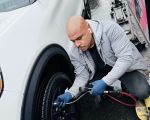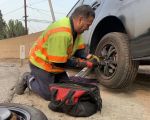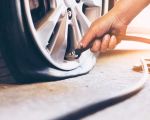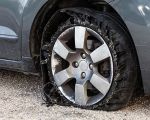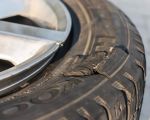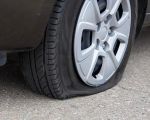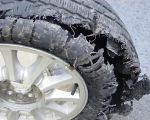How to Detect a Slow Leak in a Flat Tire
vbnet复制One of the most frustrating and inconvenient issues any driver can face is a flat tire. But not all flats are the same. Sometimes, a tire may appear flat or lose pressure slowly over time, which is typically the result of a slow leak. I've personally been in this situation and it left me wondering how to identify the leak before it becomes a bigger problem. The good news is, detecting a slow leak in a tire doesn't have to be difficult if you know what signs to look for and how to address it quickly.

MR. TIRE INC.
2078 New York Ave, Huntington Station, NY 11746, USA
1. Understanding What Causes a Slow Leak
A slow leak can occur due to a variety of reasons, and it may take time to notice the symptoms. A small puncture, valve stem issue, or even damage to the sidewall can cause air to escape gradually. Over time, this can lead to your tire losing pressure, which can affect your vehicle’s handling and safety. The key to fixing a slow leak is detecting it early enough to avoid a full flat.

MR. TIRE INC.
2078 New York Ave, Huntington Station, NY 11746, USA
1.1. Types of Slow Leaks
From my experience, the most common causes of slow leaks include:
- Pin punctures from sharp objects like nails or screws
- Damaged valve stems that fail to maintain the air pressure
- Cracks or damage to the tire’s sidewall
- Improper bead seating, which can allow air to escape slowly
1.2. Why it’s Important to Detect a Slow Leak Early
If you notice your tire losing air slowly, it’s important to address the issue as soon as possible. A slow leak, if left unchecked, can eventually lead to a full flat or tire blowout, especially if you're driving at high speeds or carrying heavy loads. In my case, not noticing a slow leak in time caused significant damage to my tire and led to an emergency roadside assistance call.
2. Signs of a Slow Leak
When you suspect that your car has a slow leak, it's essential to be vigilant for certain signs that point to this issue. I’ve learned that understanding these symptoms early on can save you from a potentially dangerous situation.
2.1. Tire Pressure Warning Light
One of the first indicators of a slow leak is the tire pressure warning light on your dashboard. This light typically turns on when one or more of your tires has lost enough air to trigger the sensor. If you notice this light on, especially when driving at highway speeds, it’s a clear sign that something is wrong with one or more of your tires. I remember one time driving home when I saw the warning light flicker on, prompting me to pull over and inspect my tires.
2.2. Visual Inspection
When I experience a slow leak, I first conduct a visual inspection. Look closely for any nails, screws, or sharp objects stuck in the tire. Sometimes, these objects aren’t completely embedded, so they’re easy to overlook. Also, check for any visible cuts or cracks on the sidewalls, as these can sometimes cause slow leaks that are harder to spot at first glance.
2.3. Tire Pressure Loss Over Time
Another clue is when you notice your tire pressure consistently dropping over several days or weeks. If you find yourself having to inflate the tire more often than usual, it might be a slow leak. In my experience, it's a good idea to keep a tire pressure gauge in your car and check the tire pressure weekly. If the reading keeps dropping, it’s time to investigate further.
3. Methods to Detect a Slow Leak
If you suspect that your tire has a slow leak, there are a few effective methods that you can use to find the source. In the past, I’ve used all of these methods to identify leaks in my own tires.
3.1. Soapy Water Test
One of the easiest and most effective methods I use to locate a slow leak is the soapy water test. Simply mix some dish soap with water in a spray bottle, then spray it over the surface of your tire, including the valve stem and the tread. If there’s a leak, you will notice bubbles forming at the spot where air is escaping. This method has never failed me and is a great way to quickly pinpoint the issue without removing the tire from the car.
3.2. Submersion Test
If you're dealing with a slow leak and want to find the exact spot, a more detailed method is submerging the tire in water. This works best if you can remove the tire and place it in a water-filled container or a large tub. When the tire is submerged, look for air bubbles emerging from the leak site. While this method is more time-consuming, it’s very effective for locating leaks that are hard to detect with just the soapy water method.
3.3. Listening for Hissing Sounds
On a quiet day, you can sometimes hear a slow leak simply by getting close to the tire. A faint hissing sound is often heard when air escapes from the tire. This can be useful if you’re trying to diagnose a slow leak while driving in a quieter environment. The sound might not be obvious at first, but with patience and a keen ear, you can usually identify it.
4. What to Do Once You’ve Found the Leak
Once you’ve located the source of the leak, it's important to decide whether you can fix the tire yourself or if you need professional help. In my experience, the best course of action depends on the severity of the damage.
4.1. DIY Fixes for Minor Leaks
If you’ve found a small puncture on the tread, such as a nail or screw, you may be able to repair it yourself with a tire repair kit. These kits usually come with rubber plugs and a special tool for inserting the plug into the hole. I’ve successfully used one of these kits on my own tires, but it’s important to make sure that the puncture is not too large or located on the sidewall, as these types of damage are typically irreparable without professional assistance.
4.2. When to Seek Professional Help
In cases where the leak is too large to repair with a kit or if it’s located on the sidewall, I always recommend taking the tire to a professional mechanic or tire shop. Attempting to drive on a damaged tire can be dangerous, especially if the leak worsens and you lose tire pressure while on the road. It’s better to err on the side of caution and have the tire inspected or replaced as necessary.
5. Preventing Future Tire Leaks
Dealing with a flat or slow leak can be frustrating, but there are steps you can take to reduce the risk of future leaks.
5.1. Regular Tire Maintenance
Keeping your tires in good shape is key to avoiding slow leaks. I’ve found that regularly checking my tires for any signs of wear, cracks, or foreign objects can help me catch problems early before they become serious. I also recommend rotating your tires regularly and ensuring that they’re properly inflated to the manufacturer’s specifications.
5.2. Using Tire Sealants
For added protection, consider using a tire sealant. These sealants are designed to help prevent minor punctures and slow leaks by forming a temporary seal. While they’re not a permanent solution, they can help you avoid dealing with a flat tire in the middle of a trip, giving you time to reach a mechanic or tire shop for a proper repair.
Detecting a slow leak in a flat tire may seem daunting at first, but with the right tools and knowledge, you can quickly identify the problem and take the necessary steps to fix it. Whether you're using the soapy water method, the submersion test, or relying on professional help, handling a slow leak early can save you from much larger issues down the road.















